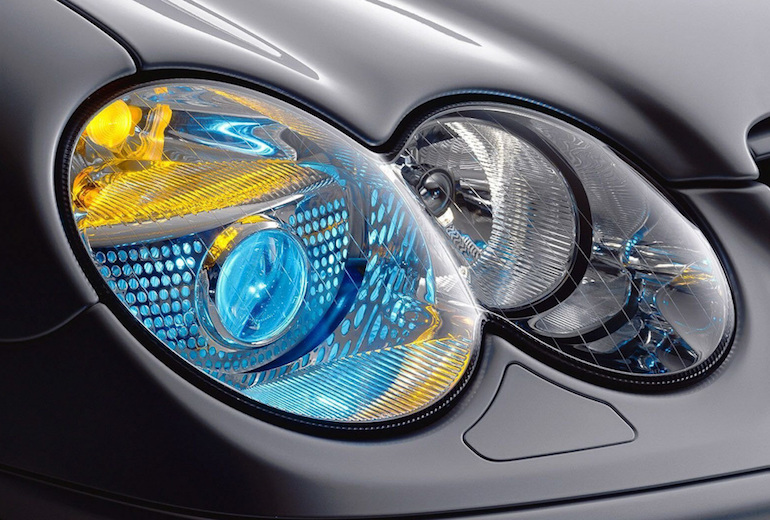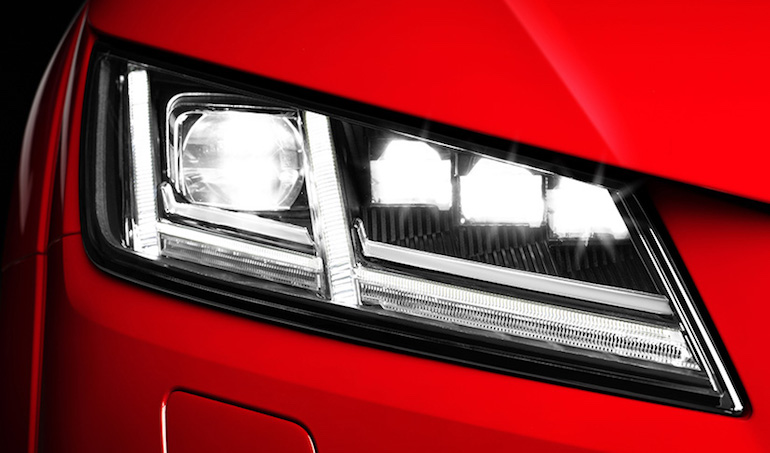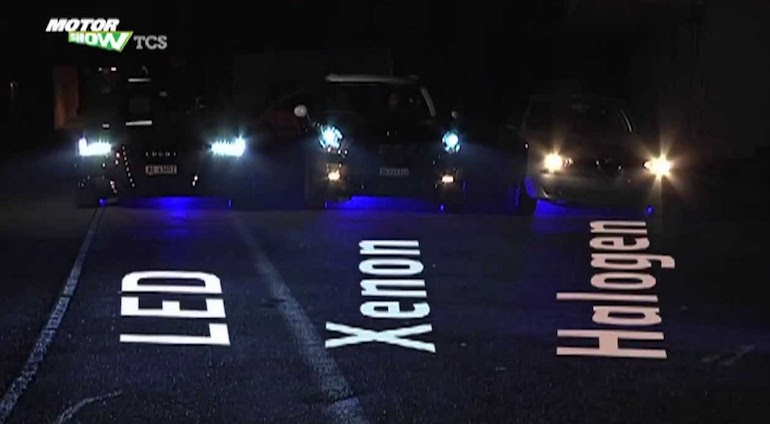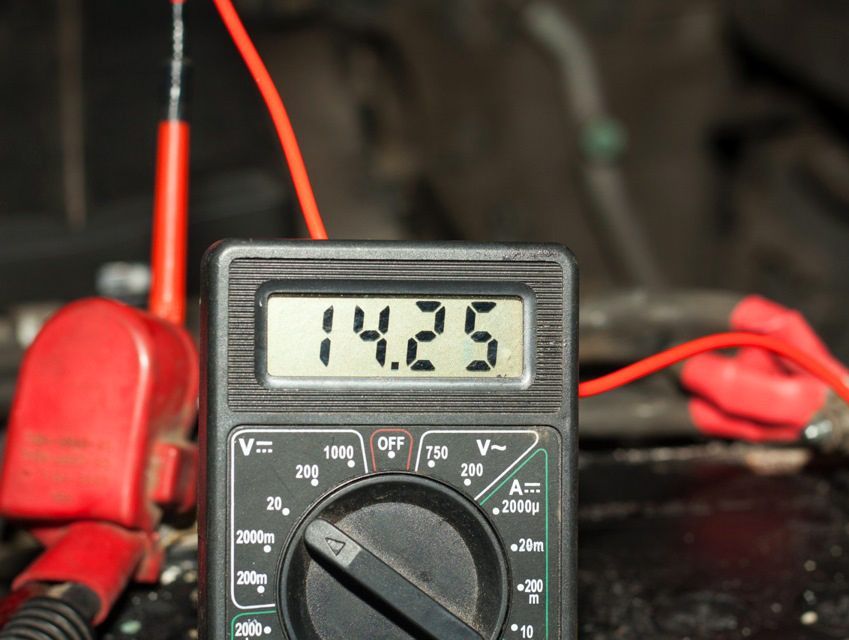
which is better and why? Only practice!
Automotive technology is evolving at a rapid pace. If a couple of years ago, premium segment cars were equipped with LED adaptive headlights, today even mid-budget cars are equipped with diodes. A logical question arises: is LED optics so good that xenon and halogen can be abandoned for its sake? Let's try to deal with this problem on our Vodi.su portal.
Xenon: device and principle of operation
Previously, we have already considered in detail the device of xenon and bi-xenon optics. Let's recall the main points.
What is xenon made of?
- a flask filled with an inert gas;
- there are two electrodes in the flask, between which an electric arc occurs;
- ignition block.
The ignition unit is needed to generate electricity with a voltage of 25 thousand volts to create an arc. The glow temperature of xenon ranges from 4000-6000 Kelvin and the light may have a yellowish or blue tint. In order not to blind oncoming drivers, only xenon with automatic headlight correction is allowed for use. And switching between high and low beam occurs thanks to an electromagnet and a special lens. Headlights are also equipped with headlight cleaners or washers, since any dirt scatters a directional beam of light and it begins to blind everyone.

Recall that only the installation of certified "legal" xenon is allowed, which is structurally suitable for your car. According to the third part of Article 12.5 of the Code of Administrative Offenses, driving with uncertified xenon may result in deprivation of rights for a period of six months to a year. Accordingly, for its installation, you need to obtain permission from the service station.
LED headlights
LEDs are a completely different technology. Glow occurs when an electric current passes through a conductor.
Device:
- Light-emitting diode (LED) - the LED element itself;
- driver - power supply, thanks to which you can stabilize the current supply and regulate the temperature of the glow;
- a cooler for cooling the LED element, as it gets very hot;
- filters to increase or decrease light temperature.

LED headlights are installed only on cars with adaptive optics. For example, multifunctional LED headlights are used today, which automatically adapt to weather conditions and speed of movement. Such a system analyzes information from rain sensors, speed, steering wheel angle. Naturally, such pleasure is not cheap.
Xenon vs LEDs
Let's talk about the pros and cons first.
Advantages of xenon:
- brightness is the main plus, these lamps provide good visibility even in rainy weather;
- long service life, estimated at 2500-3000 hours, that is, an average of 3-4 years before replacing the bulb;
- a fairly high efficiency in the region of 90-94%, respectively, xenon does not heat up as much as conventional halogens;
- bulbs must be replaced.

There are, of course, downsides. Firstly, these are installation difficulties, since ignition units often do not fit into standard optics and are placed under the hood. A separate ignition unit is required for each optical element. Secondly, xenon consumes more electricity than LEDs or halogens, and this is an additional load on the generator. Thirdly, very strict requirements are put forward for adjusting the high and low beam and for the condition of the optics itself - there should not be any cracks on the headlights. If one of the lamps is burned out, both will have to be replaced.
Advantages of LED lighting:
- low power consumption;
- easier installation;
- no permission required - there is no liability for the use of LEDs;
- do not blind oncoming drivers and pedestrians;
- in terms of brightness, they approach xenon, and some of the latest modifications even surpass it.
Nevertheless, one should not forget about significant shortcomings. First of all, unlike xenon and bi-xenon, LEDs do not produce a directional beam of light. Although they are almost equal in terms of brightness, xenon provides better visibility under the same conditions. So, if you have bi-xenon, then with the high beam on, a pedestrian on the side of the road can be seen at a distance of 100-110 meters. And with LEDs, this distance is reduced to 55-70 meters.

Secondly, LED drivers get very hot, which significantly reduces their lifespan. In this case, xenon is more profitable, since it has to be changed less often. Thirdly, although LED lamps consume less electricity, they are very sensitive to power surges in the car network.
In favor of LEDs, however, is the fact that this technology is developing very quickly. So, ten years ago, only a few knew about LED lighting, but today it is used almost everywhere. Thus, it is safe to say that in a few years, LED headlights will surpass all their predecessors in terms of their characteristics.
Loading…
